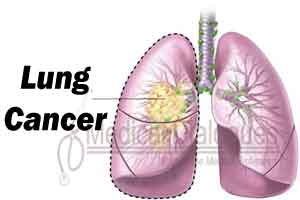- Home
- Editorial
- News
- Practice Guidelines
- Anesthesiology Guidelines
- Cancer Guidelines
- Cardiac Sciences Guidelines
- Critical Care Guidelines
- Dentistry Guidelines
- Dermatology Guidelines
- Diabetes and Endo Guidelines
- Diagnostics Guidelines
- ENT Guidelines
- Featured Practice Guidelines
- Gastroenterology Guidelines
- Geriatrics Guidelines
- Medicine Guidelines
- Nephrology Guidelines
- Neurosciences Guidelines
- Obs and Gynae Guidelines
- Ophthalmology Guidelines
- Orthopaedics Guidelines
- Paediatrics Guidelines
- Psychiatry Guidelines
- Pulmonology Guidelines
- Radiology Guidelines
- Surgery Guidelines
- Urology Guidelines
Screening for Lung Cancer: CHEST Guideline

- Evidence suggests that low-dose computed tomography (CT) screening for lung cancer results in a favorable, but the tenuous balance of benefit and harms. For asymptomatic smokers and former smokers ages 55-77 who have smoked ≥30 pack-years and either continue to smoke or have quit within the past 15 years, annual screening with low-dose CT should be offered.
- For individuals who have accumulated <30 pack-years of smoking or are ages <55 or >77 years, or have quit smoking >15 years ago, and do not have a high risk of having/developing lung cancer based on clinical risk prediction calculators, low-dose CT screening should not be performed.
- Low-dose CT screening programs should develop strategies to determine whether patients have symptoms that suggest the presence of lung cancer, so that symptomatic patients do not enter screening programs, but instead receive appropriate diagnostic testing, regardless of whether the symptomatic patient meets screening eligibility criteria.
- Screening programs should define what constitutes a positive test on the low-dose CT based on the size of a detected solid or part-solid lung nodule, with a threshold for a positive test that is either 4 mm, 5 mm, or 6 mm in diameter.
- Furthermore, low-dose CT screening programs should develop a comprehensive approach to lung nodule management, including multi-disciplinary expertise (i.e., Pulmonary, Radiology, Thoracic Surgery, Medical and Radiation Oncology), and algorithms for the management of small solid nodules, larger solid nodules, and subsolid nodules.
- For current smokers undergoing low-dose CT screening, screening programs should provide evidence-based tobacco cessation treatment, as recommended by the US Public Health Service.
- Low-dose CT screening programs should develop strategies to provide effective counseling and shared decision-making visits prior to the performance of the low-dose CT screening exam.
- Low-dose CT screening programs should also follow the American College of Radiology/Society of Thoracic Radiology protocols for performing low radiation dose chest CT scans.
- Low-dose CT screening programs should use a structured reporting system to report the exam results and develop strategies to guide the management of non-nodule findings.
- Finally low-dose CT screening programs should develop data collection and reporting tools capable of assisting with quality improvement initiatives and reporting to the current National Registry.
The literature review concluded that low-dose CT screening for lung cancer results in a favorable with a slight balance of benefit and harms.
For more reference log on to:https://doi.org/10.1016/j.chest.2018.01.016
cessationCHESTCochranecomparatorCT scansEmbaseGRADEinterventionliteratureNational Lung Screening TrialPeter J MazonnePICOPubMedPulmonaryradiologyscreeningsymptomatic
Source : With inputs from the journal ChestNext Story
NO DATA FOUND

Disclaimer: This site is primarily intended for healthcare professionals. Any content/information on this website does not replace the advice of medical and/or health professionals and should not be construed as medical/diagnostic advice/endorsement or prescription. Use of this site is subject to our terms of use, privacy policy, advertisement policy. © 2020 Minerva Medical Treatment Pvt Ltd